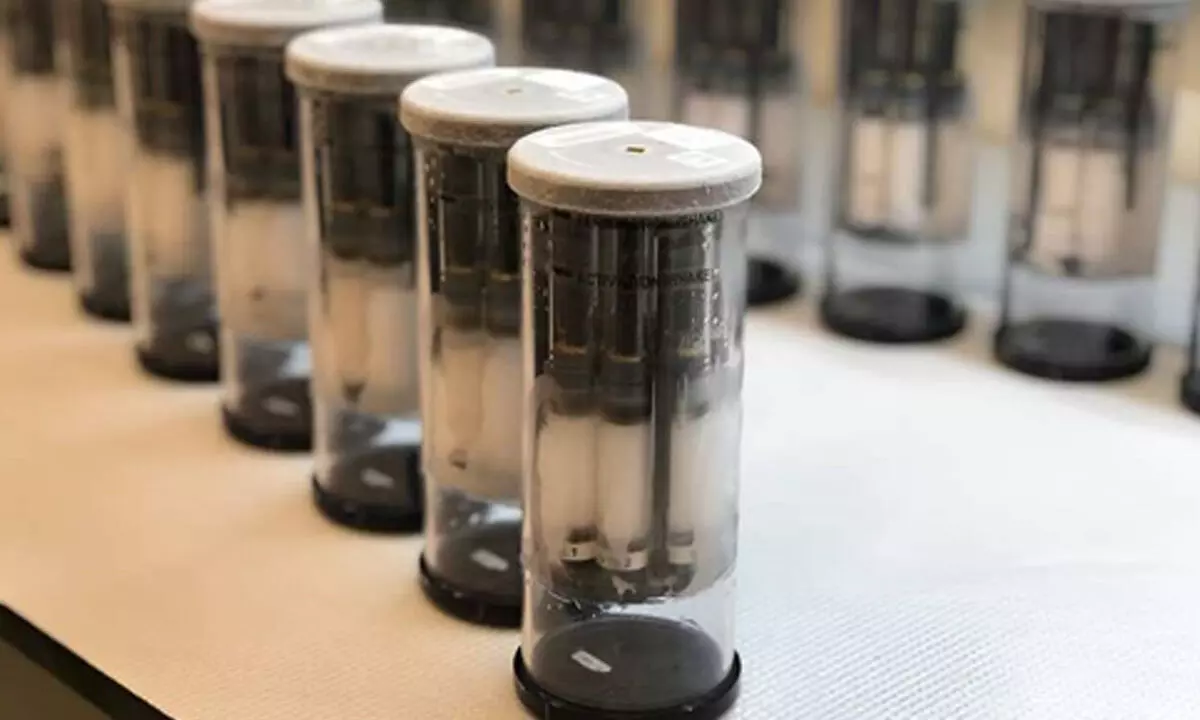Scientists find new way to prevent microbial or fungal growth in space
Share :

A team of US scientists, led by one of Indian-origin, has developed a new kind of surface treatment that can significantly help reduce the growth of mats of microbial or fungal growth on the International Space Station (ISS).
New York: A team of US scientists, led by one of Indian-origin, has developed a new kind of surface treatment that can significantly help reduce the growth of mats of microbial or fungal growth on the International Space Station (ISS).
Known as biofilms, the mats of microbial or fungal growth can clog hoses or filters in water processing systems, or potentially cause illness in people.
Clogs in water recovery system hoses aboard the ISS have been so severe at times, the hoses had to be sent back to Earth for cleaning and refurbishing. While it isn't known whether biofilms have directly contributed to astronaut illnesses, on Earth, biofilms are associated with 65 per cent of microbial infections, and 80 per cent of chronic infections.
Researchers at the Massachusetts Institute of Technology (MIT) investigated a variety of surfaces treated in different ways and exposed to a bacteria called Pseudomonas aeruginosa, which is an opportunistic pathogen that can cause infections in humans, especially in hospitals. The surfaces were incubated for three days aboard the space station, starting in 2019.
The results show that textured surfaces impregnated with a lubricant were highly successful at preventing biofilm growth during their long exposure in space. The new liquid-infused surface treatment, rather than killing the microbes as when coated with certain metals or oxides, prevented them from adhering to the surface in the first place.
The specific surface used was made of silicon that was etched to produce a nanoscale forest of pillars. This spiky surface is then infused with a silicon oil, which is drawn into the texture and held in place by capillary action, leaving a smooth and highly slippery surface that significantly reduces the adhesion of microbes and prevents them from forming a biofilm.
On previous and current space stations, including the USSR's Mir station, Salyut 6, and Salyut 7, as well as the International Space Station, "they've seen these biofilms, and they jeopardise a variety of instruments or equipment, including space suits, recycling units, radiators, and water treatment facilities, so it's a very important problem that needed to be understood," said Kripa Varanasi, Professor of mechanical engineering at MIT.
To understand, identical experiments were conducted on Earth as well as on the space station to determine the differences produced by the microgravity environment in orbit.
In the terrestrial samples, biofilm formation was reduced by about 74 per cent, while the space station samples showed a reduction of about 86 per cent.
Previous tests on Earth had shown that these treated surfaces could significantly reduce biofilm adhesion. When the samples from the space station were retrieved and tested, "we found that these surfaces are extremely good at preventing biofilm formation in the space station as well," said Varanasi, who is also founder of a company called LiquiGlide, which makes liquid-impregnated surfaces for containers to help their contents slide out.
This is important because past work has found that microgravity can have a significant influence on biofilm morphologies, attachment behaviour, and gene expression, the researchers said. Thus, strategies that work well on Earth for biofilm mitigation may not necessarily be applicable to microgravity situations.
Preventing biofilms will be especially important for future long-duration missions, such as to the moon or Mars, where the option of quickly returning fouled equipment or sick astronauts to Earth will not be available, the team said.













